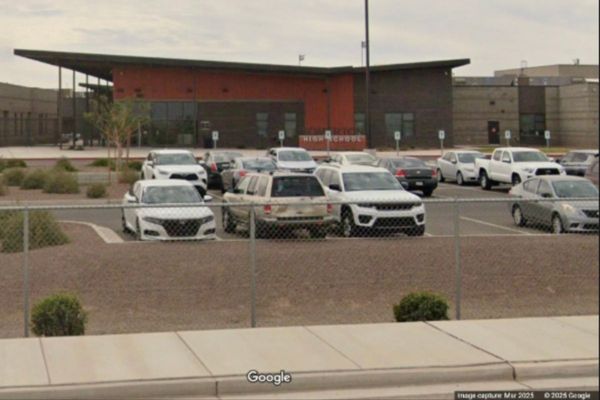
Wine-growing regions in New Zealand’s North Island have been devastated by Cyclone Gabrielle, with some vineyards there facing a long path to recovery after being buried by torrents of silt just before harvest time.
Wine drinkers could face a long wait for their favourite bottle from Hawke’s Bay and Gisborne after last month’s storm, which killed at least 11 people, and left grower Philip Barber sheltering on the roof of his house with his wife and two small children.
“We were expecting a flood, what we got was got a tsunami of mud and trees,” Barber, who owns Petane Wines in Hawke’s Bay’s Esk Valley, said.
Nothing had prepared the family for the scale of Gabrielle, which the government has called New Zealand’s biggest natural disaster this century.

“[The water] just kept coming higher and higher. It started coming in through the bloody windows downstairs so we ran up the stairs but it kept following us.” At about 3am, the couple woke their children, aged five and three, and took them on to the roof where they spent four hours, until the waters began to recede.
The family lost five hectares of vines, two houses and a brewery totalling about $8m in value but managed to recover 12,000 bottles of wine. The buildings were insured but the vineyards were not, and Barber is unsure how they will come back from the disaster.
“We’re pretty devastated by the whole thing, it was so out of the blue,” Barber said. “The whole vineyard is under a mountain of silt.”
Ben Poulter, whose family bought Sacred Hill in Hawke’s Bay just two years ago, lost one of the winery’s three vineyards completely while another was left inaccessible. In total they lost 20 hectares of vines, and 200 tonnes of grapes and have to take a boat across the river to access the property.
“It’s not a vineyard any more it’s essentially just a pile of sand and a pile of trees,” he said. “We will rebuild because that’s just what we do but it’s going to be very expensive and a lot of work.”
Philip Gregan, CEO of New Zealand Winegrowers, said it had been confronting seeing the impact the storm had had on winemakers.

“Some producers have seen their livelihoods just wiped away,” he said. “[Saying] it’s traumatic is understating it, their life’s work has gone.”
His organisation was still working to ascertain exactly how many producers and how many hectares have been affected in Hawke’s Bay and Gisborne, which are the country’s second- and third-largest wine-growing regions respectively and produced 12% of last year’s vintage, or 60m bottles.
There had been a “huge amount of concern” for producers affected by the storm from the Hawke’s Bay and Gisborne community as well as from other wine-growing regions of New Zealand, Gregan said, with “an awful lot of people just helping out”.
But he said that though some individual producers had been hard hit, the “vast majority” of the region’s winegrowers had escaped the storm unscathed and overall supply would be unaffected.
“The harvest has begun, it was due to start about the time the cyclone came along and it’s now well under way. It will play out over the next two months. The weather forecast for autumn that came out earlier this week is much more encouraging so we’ve got our fingers crossed for some fine weather.”
The industry had only recently begun to recover from the effects of the Covid pandemic, with the country’s closed borders meaning a drop-off in tourists to cellar doors and a shortage of migrant labour to help with the harvest.
“We’re confident there are going to be wineries open for tourists to visit in the coming months,” Gregan said. “But there are wider issues about the infrastructure of roads having to be fixed that need to be addressed before tourists are going to have the confidence to return so that’s something that’s out of our control.”
Hawke’s Bay and Gisborne remained under a state of emergency on Friday while other affected areas were moved from the emergency response phase to a 90-day recovery period.
The storm left some regions entirely cut off from power, mobile networks or road access, while thousands of people were displaced as landslides destroyed homes. It came on the heels of devastating flooding in Auckland and Northland, which had caused extensive damage just a fortnight earlier.
The climate change minister, James Shaw, said of the cyclone’s devastating effects: “This is climate change.”
In a furious speech to parliament, he decried “the lost decades that we spent bickering and arguing about whether climate change was real or not, whether it was caused by humans or not, whether it was bad or not, whether we should do something about it or not”.







